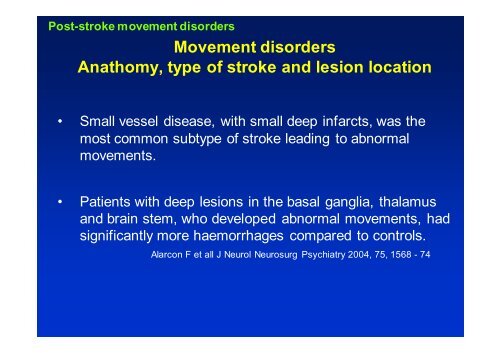Post-stroke movement syndromes
Post-stroke movement syndromes
Post-stroke movement syndromes
You also want an ePaper? Increase the reach of your titles
YUMPU automatically turns print PDFs into web optimized ePapers that Google loves.
<strong>Post</strong>-<strong>stroke</strong> <strong>movement</strong> disorders<br />
Movement disorders<br />
Anathomy, type of <strong>stroke</strong> and lesion location<br />
• Small vessel disease, with small deep infarcts, was the<br />
most common subtype of <strong>stroke</strong> leading to abnormal<br />
<strong>movement</strong>s.<br />
• Patients with deep lesions in the basal ganglia, thalamus<br />
and brain stem, who developed abnormal <strong>movement</strong>s, had<br />
significantly more haemorrhages compared to controls.<br />
Alarcon F et all J Neurol Neurosurg Psychiatry 2004, 75, 1568 - 74


